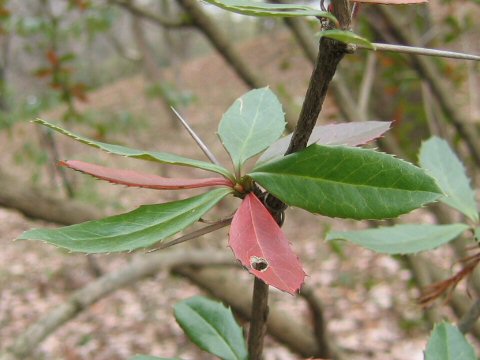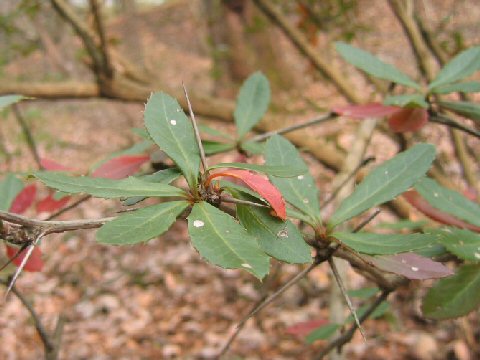 |




|

|
ÌɪzµÄ¢Ü·BíΫÌu߬iÚØjvÅA³ÍR[gÙÇÉÈèÜ·B¬}ÍpÎèAßÉÍs¢RÂ̪ èÜ·BtÍÈ~`©ç|âj`ÅAó̪ 詶µÜ·BHÉÍêªgtµÜ·BR©çS²ëA©F¢Ôð穹ܷBÊÀÍ·È~`ÅÂݪ©Á½FÉnµÜ·B¼ÍuhvÅ·B
|

|
MÈM®ÌíÎáØÅAw¼Í Berberis julianaeBp¼Í èܹñB
|

|
The Berberis julianae belongs to Berberidaceae (the Barberry family). It is a small evergreen tree that is distributed in central China. It is an evergreen "barberry" tree, growing up to 3 m tall. The twigs are angular, and the nodes have three sharp spines. The leaves are elliptic to oblanceolate with spiny serrations and grow in bunches. Yellow flowers bloom from March to April. The fruits are oblong and ripen to a bluish-black color. Its Chinese name is "h" (hao zhu ci).
|

|
åã{ðìsuåãsåt®A¨vÉÄA2005N0119úBeB
|



